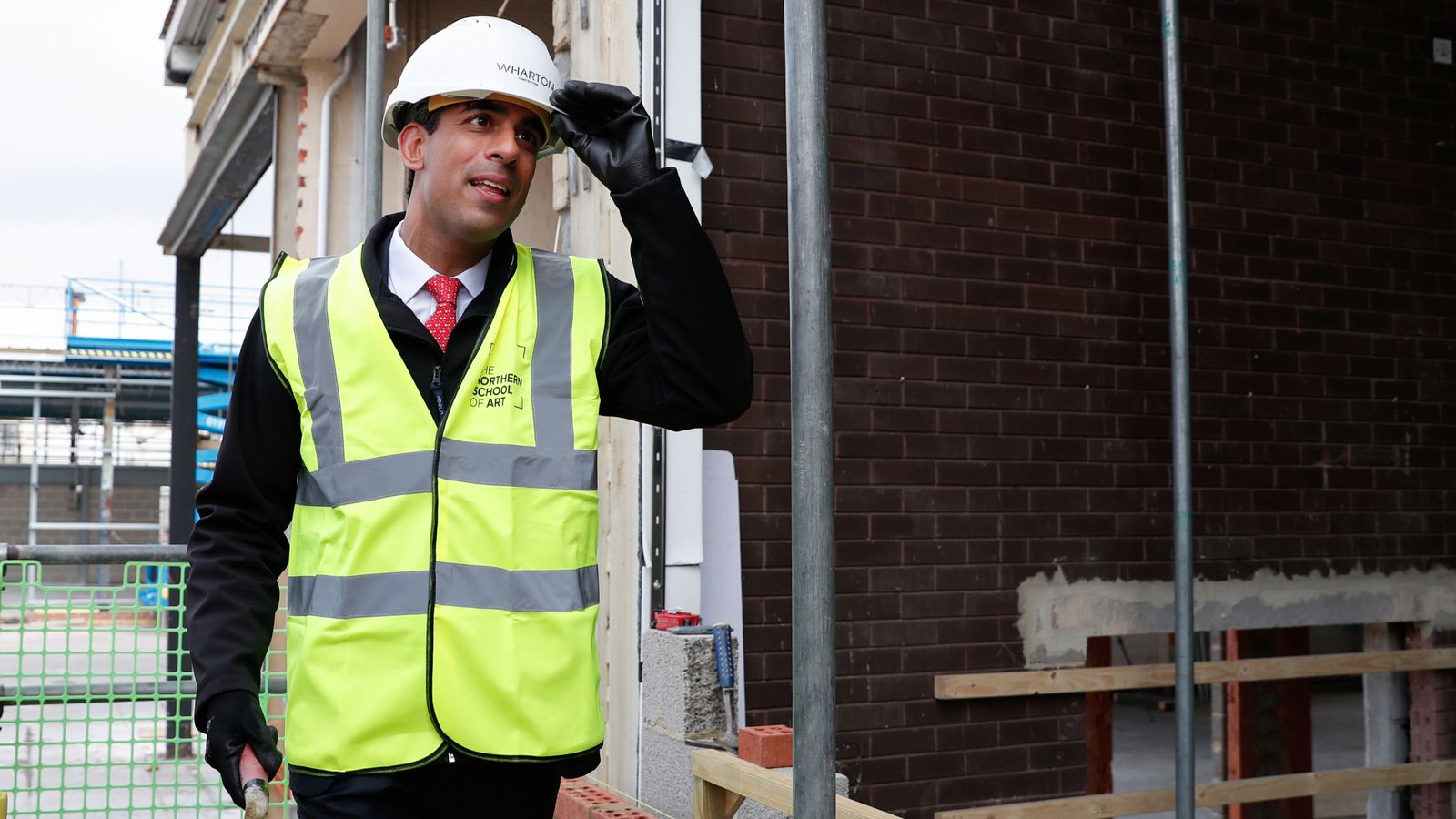Britain notched up £31.7bn of borrowing in April as the costly impact of the COVID-19 crisis stretched into a new financial year, official figures show.
The deficit was £15.6bn smaller than in the same month last year – when chancellor Rishi Sunak turned on the spending taps as the first full month of lockdown crushed economic activity.
But it was still, apart from that, the highest level of April borrowing since records began, the Office for National Statistics (ONS) said.
Please use Chrome browser for a more accessible video player
It follows the record £300.3bn deficit – which has been revised down slightly from an initial estimate of £303.1bn – for the fiscal year to the end of March 2021.
That borrowing level – the shortfall between what the government spends and its income – was at a level not seen since the end of the Second World War.
As the borrowing stretched into April, Britain’s debt piled reached £2.17trn or 98.5% of GDP – its highest level since 1962 – according to the ONS.
Public finances have taken the huge hit as tens of billions of pounds are ploughed into support for jobs through the furlough scheme at the same time as spending on health has had to be ramped up during the pandemic.
Meanwhile receipts from taxes have taken a hit thanks to the collapse in economic activity.
Now, Mr Sunak faces the task of trying to draw back emergency support without damaging Britain’s hopes of recovery.
Please use Chrome browser for a more accessible video player
Responding to the latest figures, the chancellor said he had committed to “bringing debt under control over the medium term”.
“But we also need to focus on driving a strong economy recovery from the pandemic,” he added.
“That is why the government is continuing a comprehensive package of support to help businesses and workers get back on their feet.”
The Office for Budget Responsibility (OBR) has targeted a fall in borrowing for 2021/22 as a whole to a still hefty £234bn.
The latest ONS figures showed the fiscal year began with central government receipts £3.8bn healthier than a year ago as the economy began to reopen, with spending from Whitehall £12.9bn lower.
They recorded subsidies helping businesses and households through the crisis at £7.5bn in April, £5.9bn lower than a year ago.
But the government still spent £3bn on the furlough scheme and £2.5bn on an equivalent initiative covering self-employed workers.
Ruth Gregory, senior UK economist at Capital Economics, said the latest figures showed the government’s finances were in better shape than suggested by the OBR at the time of March’s budget.
They should be helped by the rapid recovery for the economy – which after its biggest slump for three centuries in 2020 is predicted to grow at the fastest pace since 1941 this year.
“That means the Chancellor may be spared having to implement his proposed tax hikes/spending cuts before the 2024 general election,” she said.






















